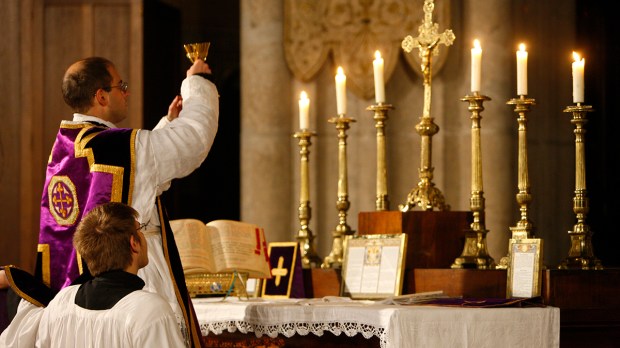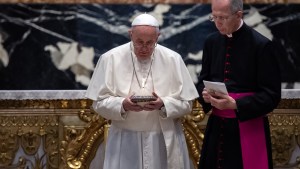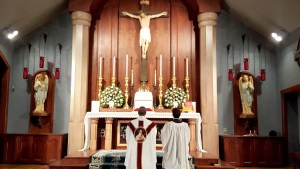Ever since Vatican II, Catholics have often confused “Mass in Latin,” with “the Latin Mass,” thinking that they were the same liturgy.
However, those two phrases refer to different Masses, though they do have similarities.
Mass in Latin
In the Roman Rite of the Catholic Church, Mass has been celebrated in the Latin language since the 3rd century. Originally Mass was primarily celebrated in Greek, which was the common language of most early Christians.
Latin remained the default language of the Mass until the Second Vatican Council, when the vernacular (the language of the particular place) was suggested to replace particular parts of the Mass.
Yet, even though in common practice the vernacular superseded Latin, it didn’t “abolish” the language.
Priests can still celebrate what is often referred to as the “Novus Ordo,” “New Mass,” or “Modern Mass” in the Latin language.
This was a specific request from Vatican II, which asked that, “The use of the Latin language is to be preserved in the Latin rites” (Sacrosanctum Concilium, 36).
Vatican II also encouraged the laity to learn Latin, so that they could better understand the words of the priest.
The Latin Mass
When Catholics use the term “the Latin Mass,” they are typically referring to the Mass as it was celebrated prior to Vatican II.
Other names for it include the “Tridentine Mass,” or “Extraordinary Form.” This Mass is celebrated according to the Roman Missal edited by John XXIII in 1962.
This Mass has its roots in a missal approved by Pope Pius V in 1570, a result of the Council of Trent (hence the name “Tridentine Mass”).
Latin is the exclusive language of this Mass, and its customs slightly differ from the Ordinary Form, though in essence it is the same celebration.
Both types of Masses remain valid in the Catholic Church, though Pope Francis’ latest document allows local bishops to monitor “the Latin Mass” more closely.



